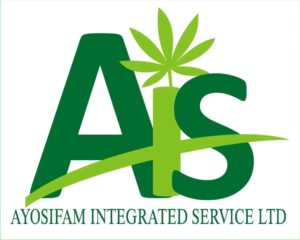Cassava and potatoes are vital pillars of food security for millions across the globe, particularly in regions like ours. These starchy staples provide essential carbohydrates and nutrients, underpinning livelihoods and diets. Yet, a significant and often overlooked challenge plagues their journey from harvest to consumption: post-harvest losses and waste. This silent drain not only diminishes the availability of these crucial crops but also acts as a potent inflationary force, pushing food prices higher and impacting the most vulnerable among us.
Imagine the arduous work of farmers in Kwara State, carefully tending to their cassava fields or potato plots. Months of labour, investment, and hope culminate in a harvest. However, the journey is far from over. Without proper handling, storage, and transportation, a significant portion of this bounty can be lost or rendered unusable. Cassava, with its perishable roots susceptible to rapid deterioration after harvest, can suffer from physiological deterioration, microbial spoilage, and physical damage during handling. Similarly, potatoes are vulnerable to bruising, sprouting, disease, and rot if not managed effectively post-harvest.
The scale of this loss is staggering. Studies have shown that post-harvest losses for root and tuber crops in developing countries can range from 20% to over 50%. This means that for every two bags of cassava or potatoes harvested, potentially one or more bags never reach consumers’ tables. This lost volume directly impacts the supply available in the market.
Now, let’s connect this loss to the price we pay at the market. Basic economics dictates that when the supply of a commodity decreases while demand remains relatively constant, the price inevitably rises. The post-harvest losses of cassava and potatoes effectively shrink the available supply, creating artificial scarcity. Traders, aware of the reduced quantities and the risks associated with further spoilage, often factor these losses into their pricing. Consequently, consumers end up paying more for less.
Furthermore, the inefficiencies in the post-harvest value chain contribute to increased costs. Inadequate storage facilities, poor transportation infrastructure, and a lack of processing capabilities all add layers of expense. These costs are often passed down to the consumer in the form of higher prices. For instance, if a significant portion of a potato harvest rots due to lack of proper storage, the remaining marketable potatoes will likely be sold at a higher price to compensate for the losses incurred.
The impact of these inflated prices is felt most acutely by low-income households who rely heavily on these affordable staples for their daily sustenance. An increase in the price of cassava flour or potatoes can significantly strain their budgets, potentially leading to food insecurity and malnutrition.
Addressing post-harvest losses and waste in cassava and potato value chains is therefore not just a matter of agricultural efficiency; it is a crucial step towards ensuring food affordability and security. Several interventions can make a significant difference:
Improved Harvesting Techniques: Gentle harvesting methods can minimize physical damage to the crops.
On-Farm Storage Solutions: Simple and affordable storage structures can help extend the shelf life of cassava and potatoes. For cassava, processing into more stable forms like chips or flour soon after harvest is critical. For potatoes, proper ventilation, temperature, and humidity control in storage can reduce spoilage.
Efficient Transportation: Investing in better road infrastructure and handling practices can minimize damage during transit.
Processing and Value Addition: Transforming cassava and potatoes into processed products with longer shelf lives can reduce waste and create new market opportunities. Think of cassava into chips, flour, garri or fufu, or potatoes into chips or flour.
Market Linkages: Connecting farmers directly with consumers or processors can reduce intermediaries and associated losses.
Education and Training: Empowering farmers and traders with knowledge on best post-harvest handling and storage practices is essential for long-term impact.
In conclusion, the seemingly invisible problem of post-harvest losses and waste in cassava and potato value chains has a tangible and detrimental effect on food prices. By focusing on reducing these losses through improved practices and infrastructure, we can increase the availability of these vital crops, stabilize prices, and ultimately contribute to greater food security and affordability for communities like ours in Kwara State beyond. It’s time to recognize that minimizing waste from farm to fork is not just good agricultural practice; it’s a crucial ingredient in the recipe for a more food-secure future.




